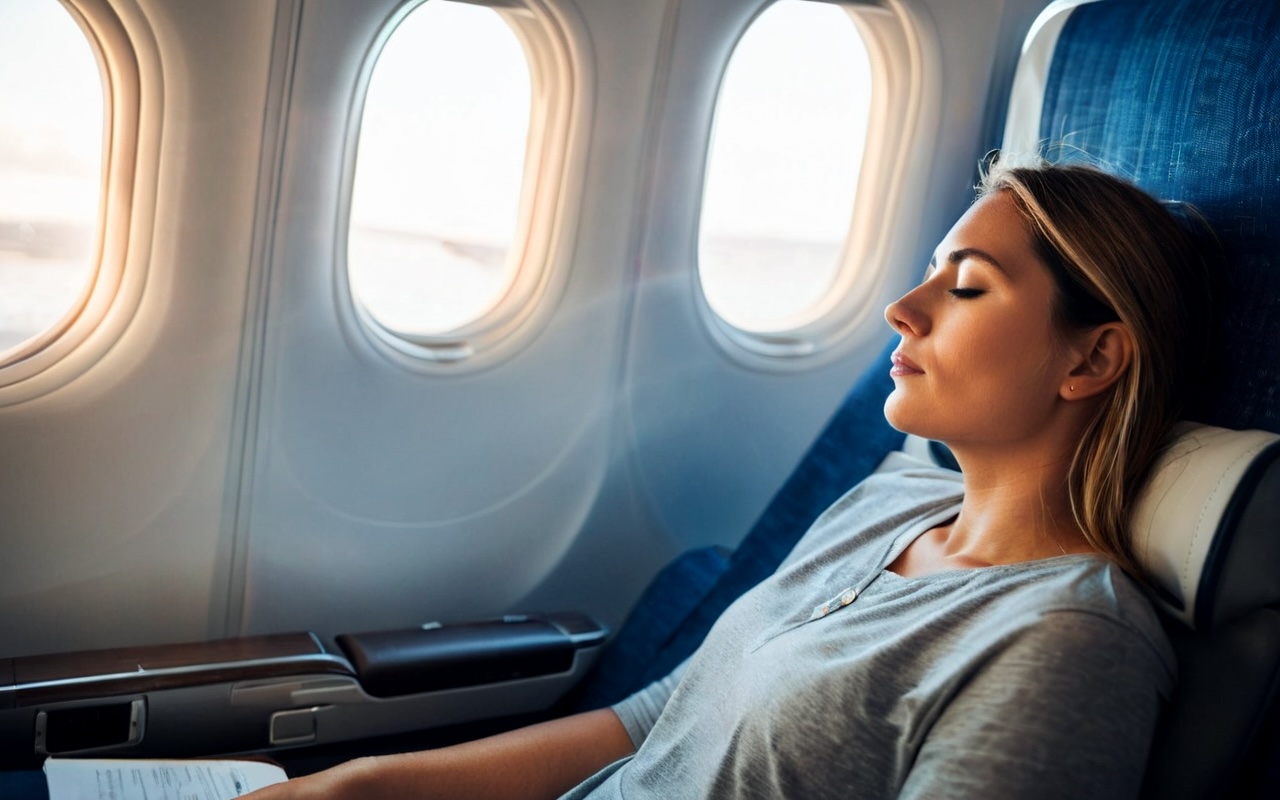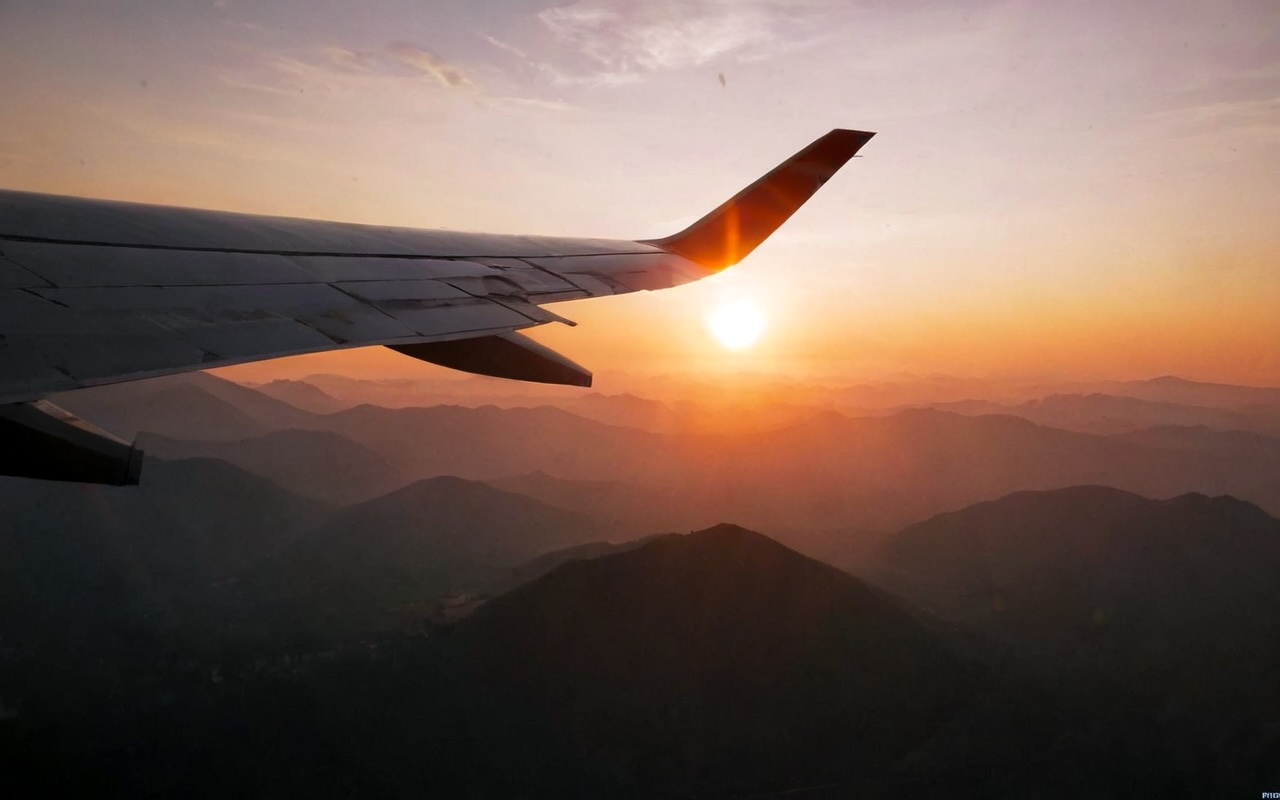Jet Lag Prevention Strategies
Essential techniques to minimize jet lag and maintain your energy when crossing time zones

Understanding Jet Lag
Jet lag occurs when your body's internal clock (circadian rhythm) is disrupted by rapid travel across multiple time zones. This circadian disruption can lead to a range of symptoms including fatigue, insomnia, digestive issues, mood changes, and decreased cognitive performance.
The severity of jet lag typically depends on:
- The number of time zones crossed (more zones = worse jet lag)
- The direction of travel (eastward travel is typically harder to adjust to than westward)
- Your age (older adults may experience more severe symptoms)
- Your travel habits and sleep patterns
- Individual differences in adaptability

The Science Behind Jet Lag
Your body maintains a roughly 24-hour cycle (circadian rhythm) controlled by the suprachiasmatic nucleus (SCN) in your brain. This "master clock" regulates hormone production, body temperature, and sleep-wake cycles, primarily using light exposure as its main cue.
When you rapidly cross time zones, your SCN remains synced to your original time zone while your new environment operates on a different schedule. This mismatch causes the uncomfortable symptoms of jet lag while your body works to realign its internal processes to the new time zone—a process that typically takes about one day per time zone crossed.
Before Your Flight: Pre-travel Preparation
Gradually Shift Your Schedule
Begin adjusting your sleep schedule 2-3 days before departure:
- For eastward travel: Go to bed and wake up 1-2 hours earlier each day
- For westward travel: Go to bed and wake up 1-2 hours later each day
Even a partial adjustment can significantly reduce jet lag severity upon arrival.
Strategic Light Exposure
Light is the primary regulator of your circadian rhythm. In the days before travel:
- Flying east: Seek bright morning light and avoid evening light
- Flying west: Seek evening light and avoid morning light
Light therapy devices can be helpful if natural light isn't available during your adjustment period.
Optimize Your Pre-flight Diet
What you eat before your flight can impact how well you adapt to a new time zone:
- Stay well-hydrated in the days leading up to your flight
- Avoid heavy, fatty meals the day before traveling
- Consider a carbohydrate-rich dinner the night before an eastward flight (may promote sleep)
- For westward flights, protein-rich meals can help maintain alertness
A helpful tool for pre-travel preparation is the jet lag calculator on TimeZonder, which can provide a customized schedule for adjusting your sleep and light exposure based on your specific itinerary.
During Your Flight: In-flight Strategies
Boarding
Set your watch to destination time to begin mental adjustment
Throughout Flight
Stay hydrated, avoid alcohol and caffeine
Every Hour
Move around to improve circulation
Sleep Time
Sleep if it's nighttime at destination
Pre-landing
Fresh up to feel alert on arrival
Sleep Strategically
Aligning your sleep with the destination time zone can jumpstart your adjustment:
- If it's nighttime at your destination, try to sleep on the plane (use eye mask, earplugs, neck pillow)
- If it's daytime at your destination, try to stay awake (engage in activities, watch movies)
- For long flights crossing many time zones, short strategic naps can help maintain energy without disrupting nighttime sleep later
Hydration and Nutrition
The airplane environment can worsen jet lag symptoms if you're not careful:
- Drink plenty of water throughout the flight (at least 8 oz per hour)
- Avoid or limit alcohol and caffeine, which can disrupt sleep and dehydrate you
- Eat light meals when food is served, aligning with meal times at your destination if possible
- Consider fasting or eating very lightly if the flight coincides with nighttime at your destination

Upon Arrival: Post-flight Adjustment
Strategic Light Exposure
Light exposure is your most powerful tool for resetting your body clock:
- For eastward travel: Get morning sunlight and avoid afternoon/evening light for the first few days
- For westward travel: Seek afternoon and early evening light while avoiding morning light
- Use sunglasses to block light when needed according to this schedule
- If natural light isn't available, light therapy devices (10,000 lux) can be effective
Physical Activity
Exercise can help reset your body clock and improve sleep quality:
- Take a short walk in the morning if you've traveled east
- Exercise in the late afternoon if you've traveled west
- Avoid intense exercise within 2-3 hours of bedtime
- Even light activity like stretching or yoga can help reduce stiffness from long flights
Sleep Management
Managing your sleep schedule is critical for rapid adjustment:
- Immediately adopt the local sleep schedule, even if you're tired at unusual times
- If you must nap, limit it to 20-30 minutes and avoid napping after 3 PM local time
- Create a sleep-conducive environment (dark, quiet, comfortable temperature)
- If you wake up in the middle of the night, avoid checking the time or using electronic devices
The 2-2-2 Rule
A helpful guideline for business travelers is the 2-2-2 rule:
- It takes about 2 days to fully adjust to a new time zone
- Schedule important meetings on day 2 rather than immediately upon arrival
- Aim to be 2 hours early for any important engagement to allow buffer time
This simple rule can help you plan a more successful and less stressful business trip.
Supplemental Aids: Medications and Natural Remedies
While behavioral strategies should be your first approach, several supplements and medications can help manage jet lag symptoms:
Melatonin
Melatonin is a hormone that helps regulate sleep-wake cycles:
- Typically taken 30 minutes before your target bedtime at your destination
- Low doses (0.5-3mg) are often as effective as higher doses
- Most helpful when traveling eastward across 5 or more time zones
- Consult your doctor before using, especially if you take other medications
Prescription Sleep Aids
In some cases, short-term prescription medications may be appropriate:
- Non-benzodiazepine sleep medications (Z-drugs) may help establish sleep in the new time zone
- Should only be used under medical supervision and for very short periods
- Not recommended for regular travelers or those with certain medical conditions
- Can have side effects including morning grogginess, which might worsen jet lag symptoms
Natural Options
Some natural remedies may help with specific jet lag symptoms:
- Caffeine: Can help maintain alertness during the day (avoid after 2 PM local time)
- Lavender essential oil: May promote relaxation and sleep when used in aromatherapy
- Ginger or peppermint tea: Can help with digestive issues associated with jet lag
- Magnesium: May support better sleep quality and muscle relaxation
Important note: Always consult with a healthcare provider before using any supplements or medications, especially if you have existing health conditions or take other medications.
Special Considerations for Different Travelers
Business Travelers
- For short trips (1-2 days), consider maintaining your home schedule if possible
- Schedule important meetings during times that align with peak alertness in your home time zone
- Use TimeZonder to coordinate meeting times that work for all participants across time zones
- Request rooms away from elevators and on higher floors to minimize noise disruptions
Families with Children
- Children may adapt more quickly to new time zones but can be more irritable during adjustment
- Maintain consistent bedtime routines even in new time zones
- Plan for extra downtime during the first 1-2 days after arrival
- Consider booking accommodations with separate sleeping areas to avoid disrupting everyone's sleep
Older Adults
- Older travelers may experience more severe and longer-lasting jet lag symptoms
- Allow extra adjustment days before scheduling important activities
- Be particularly careful about maintaining hydration during flights
- Consider compression socks to improve circulation during long flights
Frequent Flyers
- For regular travelers across similar routes, maintaining a consistent sleep-wake pattern can help
- Consider investing in quality travel comfort items (neck pillows, eye masks, noise-canceling headphones)
- Elite status with airlines can provide access to lounges where you can shower and refresh
- Track your body's responses to different strategies to develop a personalized jet lag management plan
Conclusion
Jet lag may be an inevitable aspect of long-distance travel, but with proper preparation and strategic management, you can significantly reduce its impact on your travel experience. By implementing the strategies discussed in this article—before, during, and after your flight—you can minimize recovery time and maximize enjoyment or productivity during your trip.
Remember that everyone's body responds differently to time zone changes, so you may need to experiment with different combinations of these strategies to find what works best for you. Keep track of what helps and what doesn't, and refine your personal jet lag prevention plan over time.
For help with planning your schedule around time zone differences, use the TimeZonder converter to easily visualize the time relationship between your origin and destination. With the right tools and strategies, you can conquer jet lag and make the most of your international travel experiences.